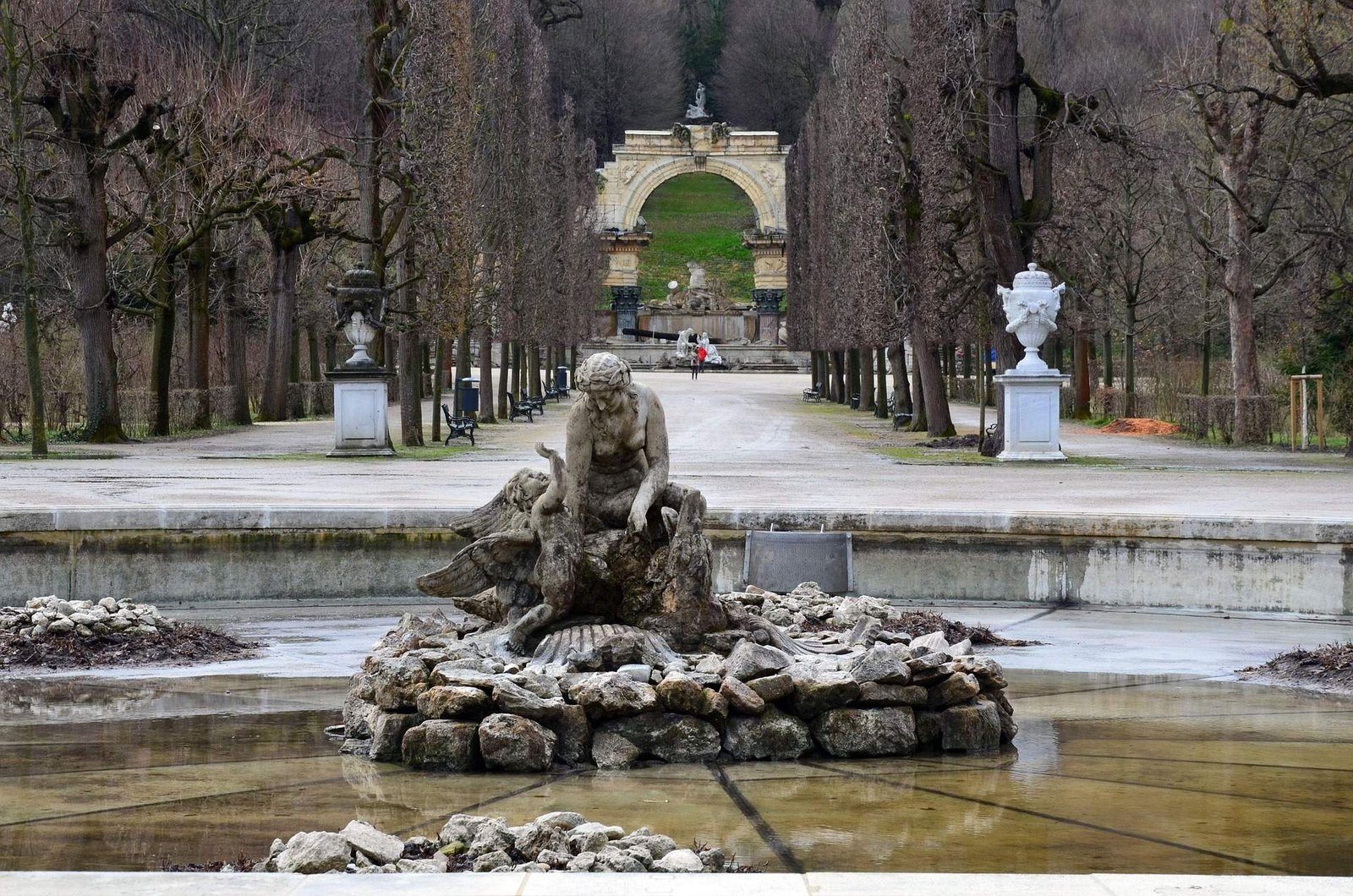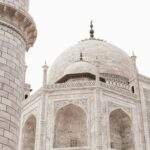Vienna, the elegant Austrian capital, stands as a testament to Europe’s rich cultural heritage, where imperial grandeur meets modern sophistication. Known for its impeccable urban planning, disciplined lifestyle, and extraordinary quality of life, Vienna consistently ranks among the world’s most livable cities. What was once the heart of the Habsburg Empire now thrives as a global economic centre while meticulously preserving its cultural legacy. The classical Austrian aesthetic pervades the city, creating an atmosphere of timeless elegance that captivates visitors at every turn.
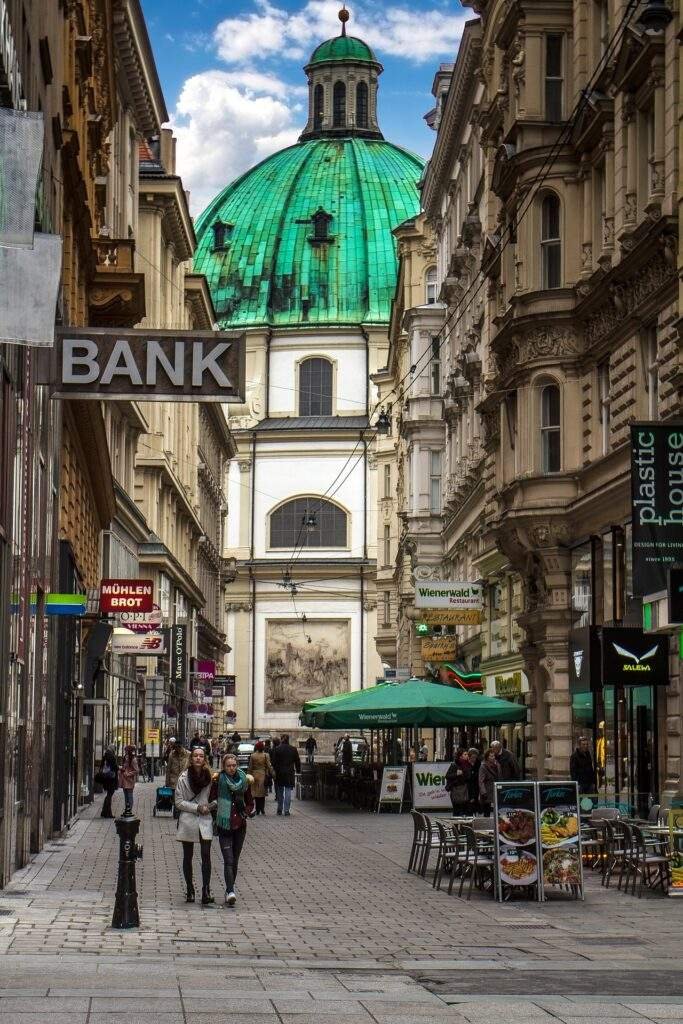
Vienna’s Fascinating History and Cultural Significance
Vienna’s historical significance stretches back to Roman times, though it reached its zenith under Habsburg rule. The city suffered considerable damage during World War II, requiring extensive reconstruction. Today, no traces of that destruction remain as Vienna has achieved remarkable development in infrastructure while carefully maintaining its cultural heritage. Vienna has been instrumental in European cultural advancement, particularly in music, with legendary composers like Mozart performing in its grand concert halls. This city has maintained its position as one of Europe’s cultural capitals through careful urban planning and preservation efforts.
Vienna’s layout makes it exceptionally visitor-friendly, with many major attractions concentrated in or near the historic first district. Like many great European cities, simply wandering the streets allows you to enjoy a fascinating mix of architectural eras, from Baroque townhouses to Jugendstil shop fronts and Neogothic municipal buildings. The official Vienna Tourist Board offers comprehensive resources for visitors, including interactive maps and event calendars to help maximize your experience.
Top 10 Attractions in Vienna
1. Schönbrunn Palace and Gardens
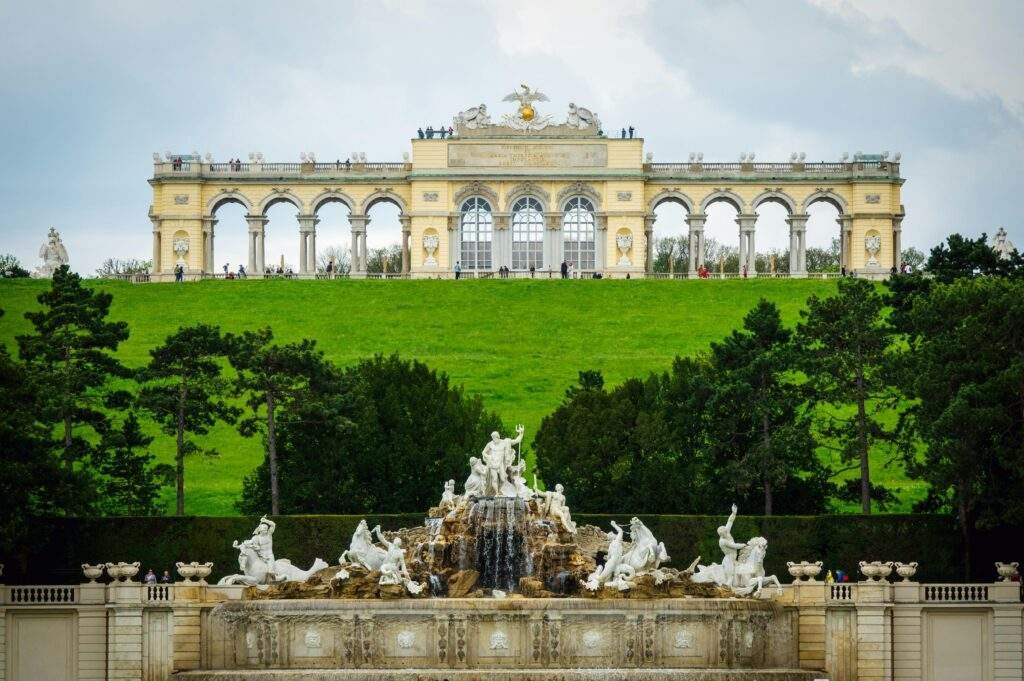
Spanning 400 acres with magnificent gardens, Schönbrunn Palace represents royal grandeur at its finest. The palace’s elegant design impresses with its noble simplicity rather than excessive ornamentation. Inside, a historical museum displays royal artefacts, weapons, and clothing. Horse-drawn carriages offer tours around the vast complex, where expansive lawns lead to the Neptune Fountain and the Gloriette pavilion, which provides spectacular views of the palace and city. The pavilion also houses a restaurant serving authentic Austrian cuisine.
As the former summer residence of the Habsburgs, Schönbrunn Palace consistently ranks as Vienna’s top attraction on TripAdvisor. The palace features ornate ceremonial rooms, sprawling gardens, a maze, and a carriage museum, with audio tours available in multiple languages and seasonal outdoor concerts enhancing the experience. Visit the official Schönbrunn website for tickets and detailed information.
2. Hofburg Palace

As the former winter residence of the Habsburg emperors and now partially serving as the Austrian president’s official residence, Hofburg Palace is Vienna’s most extensive cultural complex. This Neo-Baroque ensemble of buildings houses the National Library, museums, and government offices. The palace hosts national ceremonies, exhibitions, and celebrations. Its beautiful courtyards feature numerous bronze statues of emperors and national leaders, while the museums display artefacts from the royal collection.
The complex also features the renowned Spanish Riding School, home to the elegant Lipizzaner horses that perform classical dressage movements in a tradition dating back to the Renaissance. Visitors can tour the Imperial Apartments and the Sisi Museum, which chronicles the life of the beloved Empress Elisabeth.
3. St. Stephen’s Cathedral
This 14th-century masterpiece combines Romanesque and Gothic styles with its distinctive patterned roof tiled in bright colours—a rare decorative element. The cathedral’s 136-meter tower dominates Vienna’s skyline. Inside, Gothic architectural elements continue with elaborate carvings, sculptures, and frescoes adorning the prayer hall and chapels. The Stephansplatz square in front of the cathedral serves as one of Vienna’s primary recreational areas, surrounded by classic buildings and lined with restaurants and souvenir shops.
For panoramic city views, visitors can climb the cathedral’s towers, while those interested in history can explore the catacombs beneath the building. The cathedral (www.stephanskirche.at) remains an active place of worship, with regular services and special musical performances throughout the year.
4. Vienna State Opera
One of the world’s finest opera houses, the Vienna State Opera has hosted legendary composers including Mozart. Its Neo-Baroque exterior features numerous sculptures, while the interior dazzles with opulent design. The opera house offers guided tours and performances, with tickets best secured in advance.
The Vienna State Opera (www.wiener-staatsoper.at) presents an impressive variety of performances, from classic operas to ballet, in a magnificent 19th-century setting. While premium seats can be expensive, standing-room tickets are available for as little as €3-4, making world-class performances accessible to all budgets.
5. Austrian Parliament Building
This Neo-Greek structure symbolizes Austrian democracy, featuring a grand portico reminiscent of ancient Greek temples. The most striking element is the Pallas Athena Fountain, where the goddess of wisdom stands with a sceptre, representing justice and authority. Guided tours provide information about the building’s history, construction, and parliamentary functions.
The Parliament building recently reopened after extensive renovations, making it an even more impressive stop on any Vienna itinerary. The guided tours offer fascinating insights into Austria’s democratic processes and the architectural significance of this landmark building. Visit the official Parliament website for tour information.
6. Vienna City Hall (Rathaus)
Often mistaken for a cathedral at first glance, the Neo-Gothic Vienna City Hall exemplifies the European tradition of creating magnificent public buildings. Its impressive 98-meter main tower is flanked by four smaller towers. The interior continues the Gothic aesthetic with arched ceilings and decorative elements, including classic chandeliers that maintain the building’s period atmosphere.
The Rathausplatz in front of City Hall hosts numerous events throughout the year, including a magical Christmas market in winter and film festivals in summer. The square transforms according to the season, making it worth visiting at different times of the year.
7. Prater Amusement Park
Home to the world’s oldest operating Ferris wheel (Wiener Riesenrad, built-in 1897), Prater is also one of the world’s oldest public parks. Unlike most amusement parks, admission is free—you only pay for the rides you enjoy. The park features rollercoasters, sky wheels, indoor attractions, and games, catering to all ages. Food courts and souvenir shops complete the experience, though note that some adventure rides close during winter.
The surrounding Prater Park offers beautiful green spaces perfect for jogging, cycling, or picnicking when you need a break from the excitement. The official Prater website (www.prater.at) provides up-to-date information on opening hours and special events.
8. Museums Quarter
Vienna boasts world-class museums located around Maria Theresa Square. The Natural History Museum houses impressive collections related to Earth, the universe, and living organisms, including dinosaur fossils. The Art History Museum displays the royal family’s art collection, featuring works by world-renowned artists and ancient artefacts from Greece, Rome, and Egypt.
The MuseumsQuartier (www.mqw.at) is one of the largest cultural complexes in the world, housing institutions like the Leopold Museum (with its extensive collection of Austrian art, including works by Egon Schiele) and the Museum of Modern Art. The complex itself is a wonderful place to relax, with cafés and outdoor seating areas scattered throughout.
9. Belvedere Palace
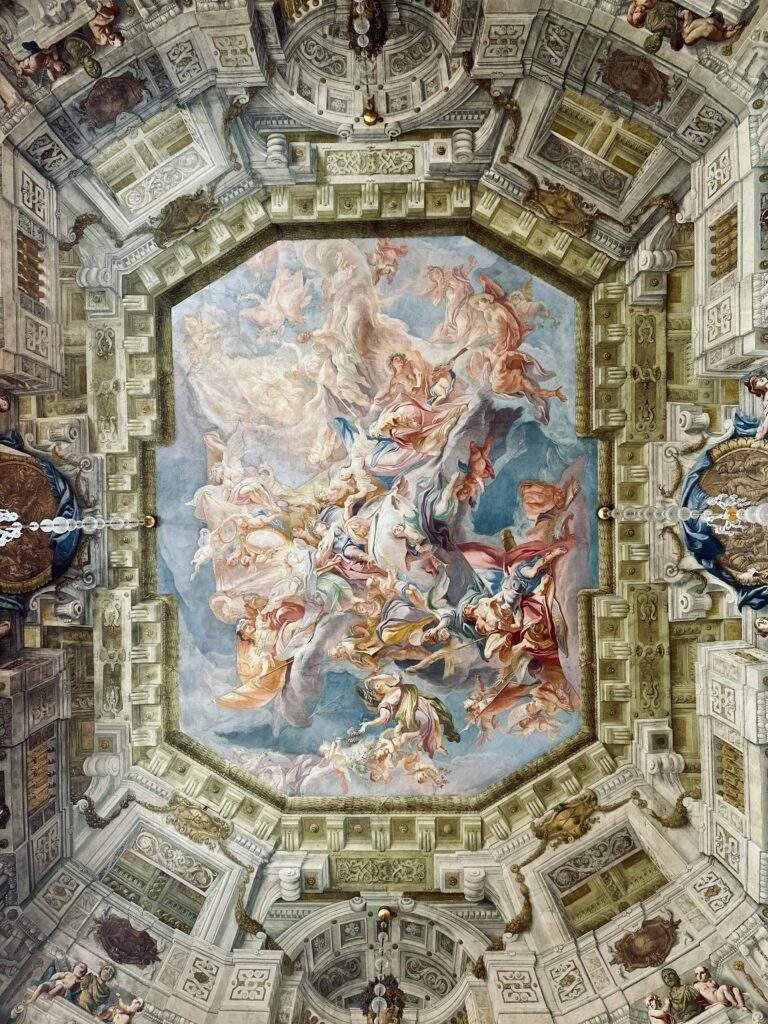
This spectacular Baroque complex contains invaluable art collections, including works by Gustav Klimt. The palace grounds feature beautifully landscaped gardens and offer another perspective on Vienna’s architectural splendour.
The Belvedere (www.belvedere.at) houses the world’s largest collection of Gustav Klimt paintings, including the famous “The Kiss.” The complex consists of two palaces—Upper and Lower Belvedere—connected by formal gardens that are themselves a masterpiece of landscape design.
10. Danube Tower
Standing 252 meters tall, the Danube Tower offers sweeping views of Vienna from its observation deck at 150 meters. High-speed elevators whisk visitors to the open-air platform, where you can enjoy panoramic vistas of the city, including the Vienna International Center (United Nations) and the uniquely channelled Danube River. Two revolving restaurants at the top provide dining with a view.
The Danube Tower (www.donauturm.at) was recently renovated and features a new visitor experience with interactive exhibits about Vienna’s development and the tower’s construction. The restaurants offer both fine dining and more casual options, all with spectacular rotating views.
Fun Facts About Vienna
- Vienna is nicknamed “City of Dreams” as Sigmund Freud, the father of psychoanalysis, lived and worked here for nearly 50 years. You can visit the Sigmund Freud Museum in his former apartment.
- The Tiergarten Schönbrunn, located in the gardens of Schönbrunn Palace, is the world’s oldest continuously operating zoo, established in 1752. With over 700 species, it’s been voted Europe’s best zoo and is considered the world’s most beautiful due to its original baroque architecture. Plan your visit at the zoo’s official website.
- Vienna hosts more than 300 balls annually between January and March. The most famous include the Opernball (held at the Vienna State Opera since 1877), the Philharmonic Ball, and the Blumenball (known for its flower arrangements).
- The iconic French croissant originated in Vienna as a pastry called “Kipferl” (meaning ‘crescent’ in German). Viennese bakers created it to celebrate Austria’s victory over the Ottoman Turks in 1683, with the shape inspired by the crescents on enemy uniforms.
- Vienna has an extensive network of underground tunnels and cellars dating back to medieval times, used throughout history for everything from storing beer to providing shelter during World War II.
- Vienna is unique among major cities for having over 700 hectares of vineyards within its urban boundaries, allowing you to experience authentic Heurigen (wine taverns) without leaving the city.
Vienna’s rich culinary heritage
the imperial gem of Austria, is renowned for its rich culinary heritage. Here are some iconic dishes you should try while visiting.
Wiener Schnitzel
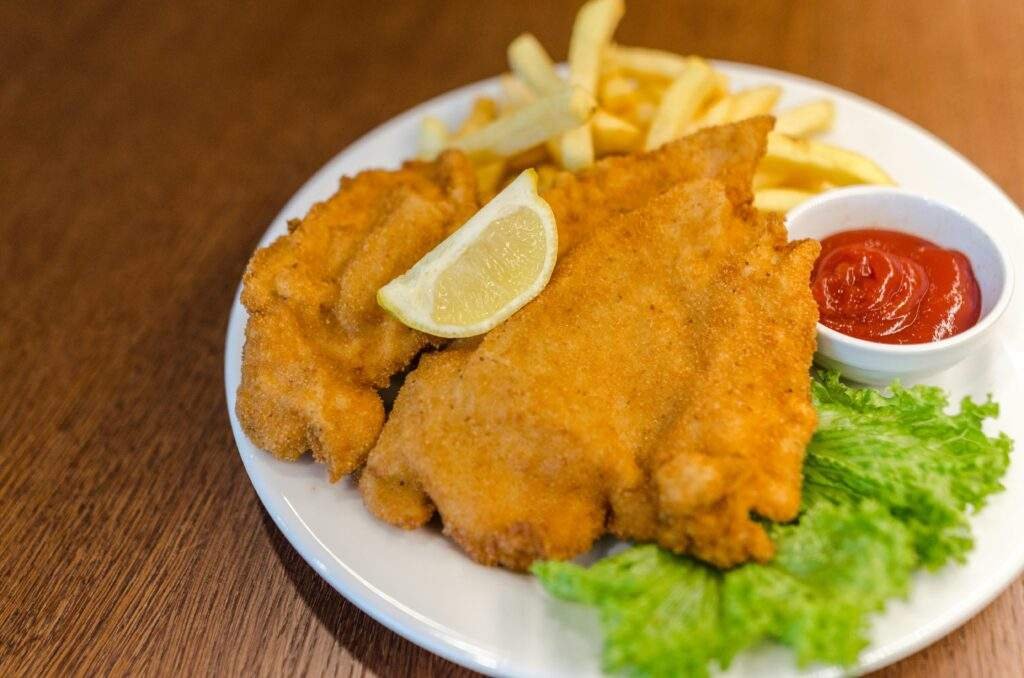
This iconic dish consists of a thinly pounded veal or pork escalope, breaded and fried to perfection. For an authentic experience, visit Figlmüller, known for its world-famous schnitzel. Another great spot is Skopik & Lohn, offering crispy real veal schnitzel.
Tafelspitz
This boiled beef dish was a favourite of Emperor Franz Joseph. Enjoy it at Griechenbeisl, a historic restaurant, or try Plachutta for another authentic version.
Käsekrainer
This cheese-filled sausage is a staple of Viennese street food. Visit Bitzinger Würstelstand Albertina for a delicious experience.
Sweet Temptations: Desserts and Pastries
Apple Strudel (Apfelstrudel)
Enjoy this classic pastry at Cafe Restaurant Residenz in Schönbrunn Palace or Cafe Dommayer.
Sachertorte
This famous chocolate cake is a must-try at Café Sacher.
Kaiserschmarrn
Try this shredded pancake dessert at Heindl’s Schmarren & Palatschinkenkuchl or Figlmüller Bäckerstraße.
Coffee House Culture
Experience Vienna’s coffee culture at Café Central or Café Sacher.
For more on Vienna’s culinary scene, explore Naschmarkt for international flavors and local produce.
How to Reach Vienna
Vienna is well-connected to European and international destinations:
By Air
Vienna International Airport (VIE) serves as the main gateway with connections to major cities worldwide. From the airport, the city centre is easily accessible by:
- City Airport Train (CAT): 16 minutes to Wien Mitte
- S-Bahn (S7): 25 minutes to Wien Mitte, costing 4.20€
- Airport bus (VAL): 20 minutes to various central locations, with service from Westbahnhof to the airport costing 8€
- Taxi: approximately 30 minutes depending on the traffic
The official Vienna Airport website provides real-time information on arrivals, departures, and ground transportation options.
By Train
Vienna has excellent rail connections to neighbouring countries:
- Direct trains from cities like Munich, Prague, Budapest, and Zurich
- High-speed ICE/Railjet services from Germany and Switzerland
- Night trains from various European cities
The Austrian Federal Railways (www.oebb.at) offer comprehensive timetables and online booking services, with discounts available for early reservations.
By Bus
International bus services connect Vienna to numerous European cities, often at lower prices than trains:
- FlixBus operates routes to/from many major cities
- Vienna International Busterminal (VIB) serves as the main hub
By Car
Vienna is accessible via well-maintained highways:
- A1 from western Austria and Germany
- A2 from southern Austria and Italy
- A4 from eastern countries like Hungary and Slovakia
- A22 from the Czech Republic
Cost of Living in Vienna
While visiting Vienna, it’s helpful to understand the local cost of living:
- For a single person, monthly living costs average €2,061 including rent, while a family of four needs around €5,658.
- Accommodation costs vary by location and type:
- Hotel room: €80-200 per night (city centre)
- Airbnb: €50-150 per night
- Monthly apartment rental: €1,570 (room) to €2,090 (studio)
- Food expenses:
- Budget meal: €10-15
- Mid-range restaurant: €20-30 per person
- Coffee and pastry: €5-8
- Groceries: €200-350 Monthly
- Transportation:
- Single ticket: €2.40
- 24-hour pass: €8
- Weekly pass: €17.10 (digital personalized version available for €19.70)
- Monthly pass: €51
- Vienna is more expensive than Madrid and Rome but more affordable than Paris or London, with good value considering the quality of life and amenities.
Visitors can check Numbeo for the most current cost of living data, which is regularly updated with user-contributed information.
Best Time to Visit Vienna
Each season in Vienna offers unique experiences:
Spring (March to May)

March can be transitional with mixed weather, but April and May bring pleasant temperatures between 8-21°C with blooming gardens and fewer tourists. This shoulder season offers better accommodation rates and a more peaceful experience of the city.
The city’s parks and gardens, particularly at Schönbrunn and Belvedere, come alive with colourful flowers, creating perfect backdrops for photography. The Vienna City Marathon, usually held in April, adds vibrancy to the city streets.
Summer (June to September)
Vienna’s summer is glorious with temperatures reaching 30°C, long sunny days, and minimal rainfall (limited to 7-8 days monthly). The city comes alive with festivals, concerts, and outdoor exhibitions. Theatre productions, musical performances, and garden festivals create a vibrant atmosphere throughout the season.
The Vienna Danube Island Festival (Donauinselfest), typically held in June, is Europe’s largest free open-air festival, featuring hundreds of acts across multiple stages. Summer evenings are perfect for dining al fresco at the city’s many sidewalk cafés and restaurants.
Autumn (October to November)
Temperatures gradually drop to around 20°C, with cooler nights around 9°C. Late November might bring light snow. This shoulder season is slightly drier than spring and offers beautiful fall colours in Vienna’s parks and gardens.
Autumn brings wine harvest celebrations at Vienna’s urban wineries, with many Heurigen (wine taverns) offering new wines paired with seasonal specialities. The Vienna International Film Festival, held in October, attracts cinema enthusiasts from around the world.
Winter (December to February)
Though cold, Vienna’s winter is magical with its famous Christmas markets illuminating the city. The ball season (January through March) brings a unique cultural experience. Museums and concert halls provide warm refuges from the cold, making winter an excellent time for cultural explorations.
The Christmas markets (www.christkindlmarkt.at), particularly at Rathausplatz and Schönbrunn, transform Vienna into a festive wonderland with handcrafted gifts, mulled wine, and traditional foods. New Year’s Eve in Vienna features a special “Silvesterpfad” (New Year’s Path) with various entertainment stages throughout the city centre.
Trip Itinerary Suggestions
1-Day Vienna Highlights
- Morning: Start with a walking tour of the historic centre (UNESCO World Heritage Site), visiting Hofburg Palace
- Noon: Lunch at a traditional Viennese café near Stephansplatz
- Afternoon: Visit St. Stephen’s Cathedral and explore the pedestrian streets like Graben and Kohlmarkt
- Evening: Dinner at Naschmarkt, the city’s famous market with numerous food stalls
3-Day Vienna Experience
Day 1: Historic Center
- Morning: Walking tour of the old town
- Afternoon: Hofburg Palace complex and the Spanish Riding School if possible
- Evening: Dinner at Naschmarkt followed by a stroll through the illuminated city centre
Day 2: Art and Culture
- Morning: Museumsquartier and Museum of Fine Arts
- Afternoon: St. Stephen’s Cathedral (including tower climb for views)
- Evening: Experience Viennese café culture with dinner at a traditional coffeehouse
Day 3: Imperial Splendor
- Morning: Schönbrunn Palace and Gardens (allow at least 3 hours)
- Afternoon: House of Music and Jewish Square
- Evening: Classical concert or opera performance (if available)
5-Day Vienna Immersion
Add to the 3-day itinerary:
Day 4: More Palaces and Opera
- Morning: Belvedere Palace and gardens
- Afternoon: Natural History Museum
- Evening: Performance at the Vienna State Opera (book well in advance)
Day 5: Specialist Museums and Art
- Morning: Visit specialized museums like the Mozart Museum or Freud Museum
- Afternoon: Albertina Museum
- Evening: Dinner in the Spittelberg quarter, known for its restaurants and bohemian atmosphere
7-Day Vienna and Beyond
Add to the 5-day itinerary:
Day 6: Vienna’s Wine Culture
- Full-day wine tour to the vineyards within Vienna or in the nearby Wachau Valley
- Evening: Traditional “Heurigen” (wine tavern) experience
Day 7: Day Trip to Bratislava
- The Slovak capital is just one hour from Vienna by train or boat
- Explore Bratislava’s charming old town and castle
- Return to Vienna for a farewell dinner
For more detailed itinerary suggestions, Layla.ai offers customizable plans based on your interests and travel style.
Travel Tips for Vienna
- Public Transportation: Vienna’s public transport system is excellent. Consider purchasing a Vienna City Card, which offers unlimited public transport and discounts at attractions.
- Coffee Culture: Visiting traditional coffeehouses like Café Central or Café Sacher is an essential Viennese experience. Take your time—lingering over coffee is part of the culture.
- Concert Tickets: For performances at the Vienna State Opera or Musikverein, book tickets well in advance or try for standing-room tickets on the day (much cheaper).
- Language: While German is the official language, English is widely spoken in tourist areas, hotels, and restaurants.
- Tipping: Service is usually included, but rounding up or adding 5-10% for good service is customary.
- Sunday Closures: Most shops close on Sundays, except those in train stations and some tourist areas. Plan your shopping accordingly.
- Water: Tap water in Vienna comes from mountain springs and is excellent to drink.
- Dress Code: Some high-end restaurants especially the Opera require formal attire. Pack accordingly if you plan to attend such venues.
- Tourist Information: Visit one of the official Tourist Info offices at Albertinaplatz or at the airport arrivals hall for maps, brochures, and personalized assistance. You can also contact them by email at info@wien.info or by phone at +43-1-24 555.
Vienna blends imperial grandeur with modern vibrancy, offering visitors an unforgettable journey through European history, art, and culture. Whether you’re admiring Baroque palaces, savouring Sachertorte in a traditional café, or enjoying a classical concert, Vienna delivers experiences that resonate long after your trip ends. This city that once fostered the talents of Mozart, Beethoven, and Freud continues to inspire with its beauty and cultural richness.
“We’d love to hear from you! Have you been to this destination, or do you have any tips to add? Drop a comment below and share your thoughts with our community. Let’s make this guide even better together!

